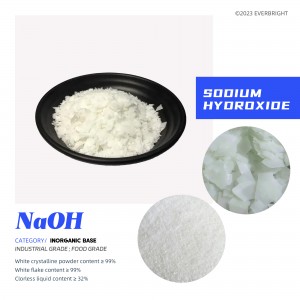Sodium Tripolyphosphate(STPP)
Product Details

Specifications provided
High temperature Type I
Low temperature type II
Content ≥ 85%/90%/95%
Sodium tripolyphosphate anhydrous substances can be divided into high temperature type (I) and low temperature type (II). The aqueous solution is weakly alkaline, and the pH of 1% aqueous solution is 9.7. In an aqueous solution, pyrophosphate or orthophosphate is gradually hydrolyzed. It can compound alkaline earth metals and heavy metal ions to soften water quality. It also has ion exchange capabilities that can turn a suspension into a highly dispersed solution. Type I hydrolysis is faster than type II hydrolysis, so type II is also called slow hydrolysis. At 417 ° C, type II transforms into type I.
Na5P3O10·6H2O is a triclinic straight Angle white prismatic crystal, resistant to weathering, with a relative value density of 1.786. Melting point 53℃, soluble in water. The product breaks down during recrystallization. Even if it is sealed, it can decompose into sodium diphosphate at room temperature. When heated to 100 ° C, the decomposition problem becomes sodium diphosphate and sodium protophosphate.
The difference is that the bond length and bond Angle of the two are different, and the chemical properties of the two are the same, but the thermal stability and hygroscopicity of type I are higher than that of type II.
EVERBRIGHT® ‘ll also provide customized :content/whiteness/particlesize/PHvalue/color/packagingstyle/ packaging specifications and other specific products that are more suitable for your use conditions , and provide free samples.
Product Parameter
7758-29-4
231-838-7
367.864
Phosphate
1.03g/ml
soluble in water
/
622 ℃
Product Usage



Daily chemical washing
It is mainly used as an auxiliary for synthetic detergent, soap synergist and to prevent soap oil precipitation and frosting. It has a strong emulsification effect on lubricating oil and fat, and can be used as a leavening agent. It can enhance the decontamination ability of detergent and reduce the damage of stains to fabric. The PH value of buffer soap can be adjusted to improve the washing quality.
Bleach/deodorant/antibacterial agent
Can improve the bleaching effect, and can remove the odor of metal ions, so as to be used in bleaching deodorant. It can inhibit the growth of microorganisms, thus playing a antibacterial role.
Water retaining agent; Chelating agent; Emulsifier (Food grade)
It is widely used in food, often used in meat products, beverages, dairy products, pastries and other foods. For example, adding sodium tripolyphosphate to meat products such as ham and sausage can increase the viscosity and elasticity of meat products, making meat products more delicious. Adding sodium tripolyphosphate to juice drinks can increase its stability and prevent its delamination, precipitation and other phenomena. In general, the main role of sodium tripolyphosphate is to increase the stability, viscosity and taste of food, and improve the quality and taste of food.
① Increase viscosity: sodium tripolyphosphate can be combined with water molecules to form colloids, thereby increasing the viscosity of food and making it more dense.
② Stability: Sodium tripolyphosphate can be combined with protein to form a stable complex, thereby enhancing the stability of food and preventing stratification and precipitation during production and storage.
③ Improve the taste: sodium tripolyphosphate can improve the taste and texture of food, making it more soft, smooth, rich taste.
④ is one of the commonly used water retaining agents in meat processing, has a strong adhesion effect, can prevent meat products from discoloration, deterioration, dispersion, and also has a strong emulsification effect on fat. The meat products added with sodium tripolyphosphate lose less water after heating, the finished products are complete, good color, meat is tender, easy to slice, and the cutting surface is shiny.
Water softening treatment
Water purification and softening: sodium tripolyphosphate and metal ions in the solution Ca2+, Mg2+, Cu2+, Fe2+ and other metal ions chelate to produce soluble chelates, thereby reducing hardness, so widely used in water purification and softening.


















